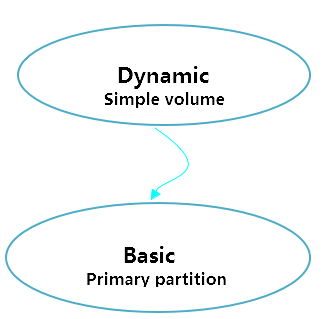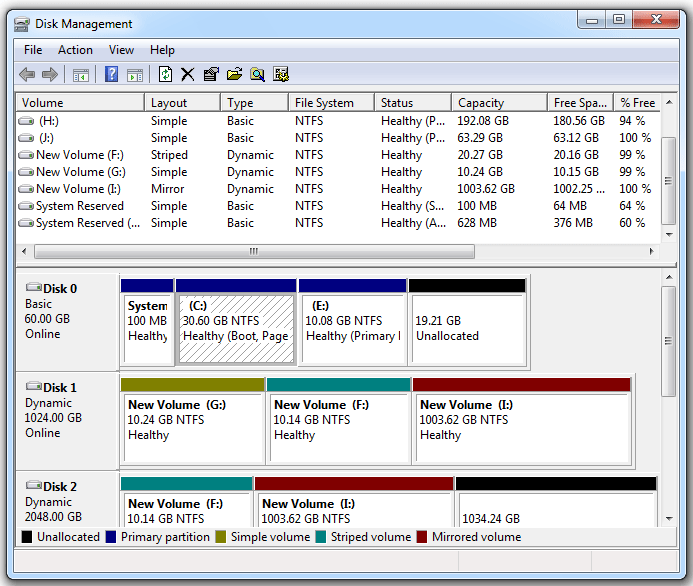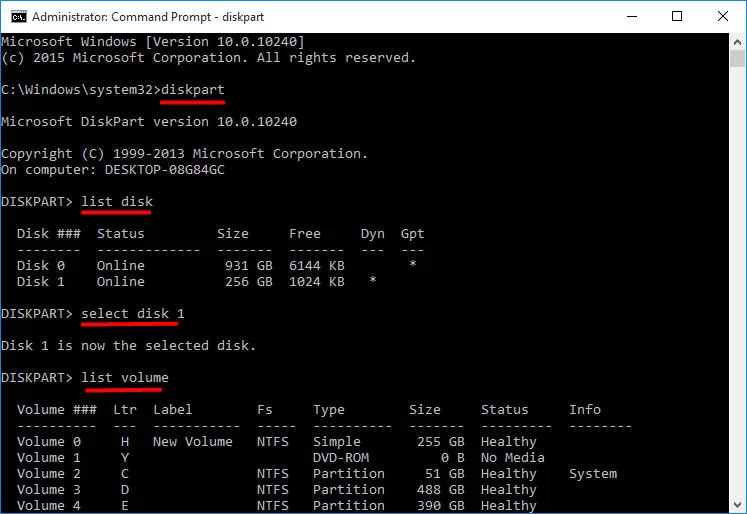


In Basic Disk, partitions once created cannot be changed. To Dynamic Disk to Basic Disk conversion, we have to delete all volumes of a dynamic disk. Volumes are of the following types: simple volumes, spanned volumes, striped volumes, mirrored volumes, and RAID-5 volumes.īasic Disk can be converted into Dynamic Disk Configuration without losing any data. Partitions are of two types: MBR partition and GPT partition. In Dynamic Disk, a hard drive is divided into dynamic volumes.Ī hard drive can have at max 3 or 4 partitions with one secondary extended partition. In Basic Disk, a hard drive is divided into fixed partitions. The following are some of the important differences between Basic Disk and Dynamic Disk. The following operations can be performed in dynamic disk configuration.Ĭreate/Delete simple/spanned/striped/mirrored and RAID-5 volumes. A partition can be extended using dynamic disk configuration. It is more flexible than the basic disk configuration.

The following operations can be performed in basic disk configuration.Ĭreate/Delete primary/extended partition.Ĭreate/Delete logical drives within an extended partition.ĭynamic Disk Configuration works on the concept of volumes. A disk can have up to four partitions or three partitions and one extended partition with multiple logical drives. Basic Diskīasic Disk Configuration works on the concept of partition, partition table, and logical drives. Dynamic Disk is available from Window 2000 onwards. A basic disk is from initial days of DOS, Windows to till date. For other than a simple volume, though, you need more than one disk.Both basic disk and dynamic disk are disk configurations available in Windows Operating System. To gain more space, you can create an extended, spanned, or striped volume. You can use a simple volume for all data storage until you need more space on your disks. Also, you can add space to, or extend, a simple volume after you create it. However, you can extend a simple volume only if it is formatted with the version of NTFS that is used in Windows 2000 or the Windows Server 2003 family of operating systems. A simple volume is similar to a partition, except it does not have the size limits that a partition has, nor is there a restriction on the number of volumes that you can create on a single disk.Ī simple volume uses the NTFS, FAT, or FAT32 file system formats. You can create a simple volume from unallocated space on a dynamic disk. Simple volume file formats Use a simple volume for all basic data storageĬontains space on a single disk Can be created only on dynamic disks Has fewer restrictions than a basic dish partition Can use the NTFS, FAT, or FAT32 file systems Can be extended if formatted with NTFSĪ simple volume is a single volume that resides on a dynamic disk.


 0 kommentar(er)
0 kommentar(er)
